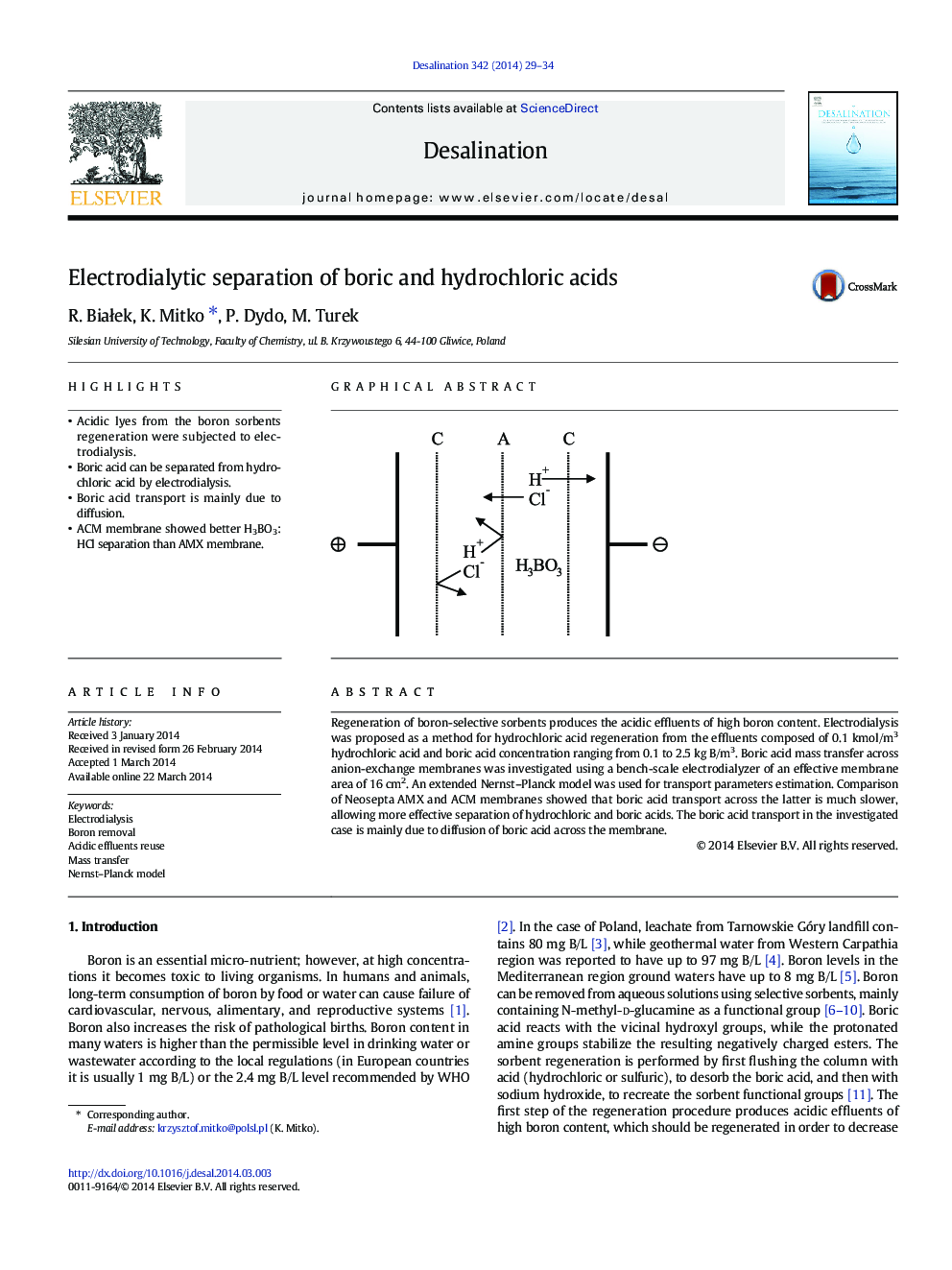| Article ID | Journal | Published Year | Pages | File Type |
|---|---|---|---|---|
| 623623 | Desalination | 2014 | 6 Pages |
•Acidic lyes from the boron sorbents regeneration were subjected to electrodialysis.•Boric acid can be separated from hydrochloric acid by electrodialysis.•Boric acid transport is mainly due to diffusion.•ACM membrane showed better H3BO3:HCl separation than AMX membrane.
Regeneration of boron-selective sorbents produces the acidic effluents of high boron content. Electrodialysis was proposed as a method for hydrochloric acid regeneration from the effluents composed of 0.1 kmol/m3 hydrochloric acid and boric acid concentration ranging from 0.1 to 2.5 kg B/m3. Boric acid mass transfer across anion-exchange membranes was investigated using a bench-scale electrodialyzer of an effective membrane area of 16 cm2. An extended Nernst–Planck model was used for transport parameters estimation. Comparison of Neosepta AMX and ACM membranes showed that boric acid transport across the latter is much slower, allowing more effective separation of hydrochloric and boric acids. The boric acid transport in the investigated case is mainly due to diffusion of boric acid across the membrane.
Graphical abstractFigure optionsDownload full-size imageDownload as PowerPoint slide
